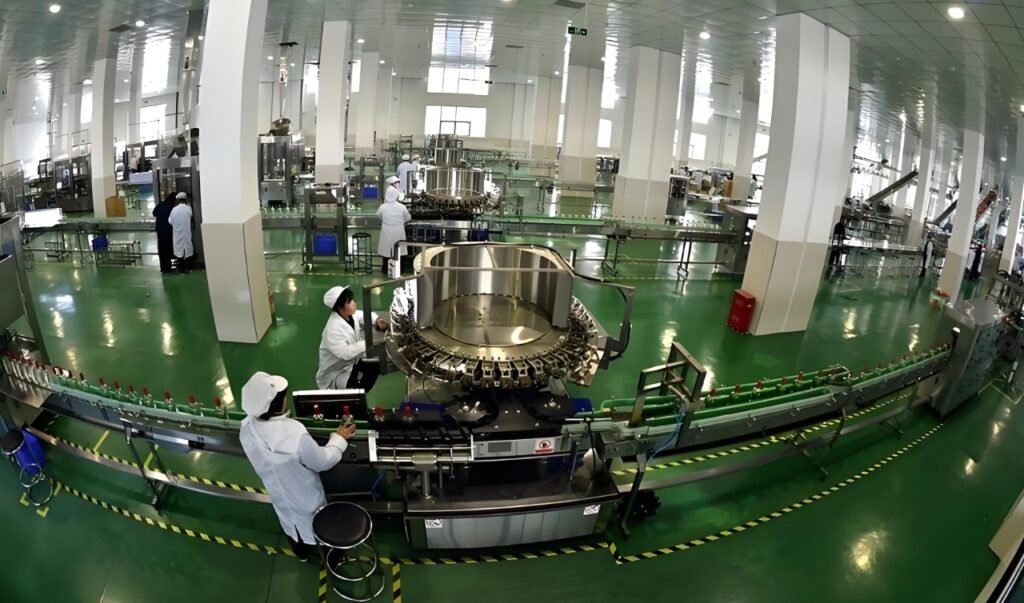
Establishing a regular maintenance schedule is vital for keeping filling machines running smoothly. Filling machines, including automatic filling machines, perform critical tasks across industries. Preventative maintenance minimizes downtime, improves performance, and extends the machine’s life. Here’s how to build an effective maintenance schedule for your filling machine.
Why a Maintenance Schedule Matters
A structured maintenance schedule prevents machine failures and ensures consistent output quality. With automatic filling machines, even minor breakdowns can disrupt production. Regular upkeep allows operators to catch small issues before they become costly problems.
Steps to Build an Effective Maintenance Schedule
1. Identify Key Maintenance Tasks
List all tasks needed to keep the filling machine in top shape. Include activities like cleaning, lubrication, part inspections, and software updates. Maintenance tasks will differ depending on whether it’s a manual or automatic filling machine.
2. Set Frequency for Each Task
Determine how often each task should occur. Routine tasks like cleaning may be daily, while inspections might be weekly or monthly. Consulting the machine manual is helpful for understanding recommended intervals for each component.
3. Organize Tasks by Machine Components
Break down the machine into key parts like pumps, nozzles, seals, and sensors. Organize tasks by component so that each part receives focused care. This structure reduces the chance of missing any essential maintenance for the filling machine.
4. Define Daily, Weekly, and Monthly Tasks
- Daily: Clean nozzles, check fluid levels, and perform a basic visual inspection.
- Weekly: Lubricate moving parts, inspect belts, and ensure valves are clear.
- Monthly: Perform a thorough check on the machine’s software and replace any worn-out seals.
5. Use Checklists
Checklists make sure operators cover all necessary tasks. A checklist for daily, weekly, and monthly tasks standardizes the process. It also allows operators to verify that all parts of the filling machine have been properly serviced.
6. Assign Responsibilities
Designate who will perform each task. Operators may handle basic maintenance tasks, while technicians might take on more complex work. Clearly assigning roles ensures no gaps in care.
7. Record Maintenance Activity
Keeping a log of all maintenance activities creates a valuable history for each filling machine. It also makes it easier to track issues and prevent recurring problems. Maintenance logs can reveal patterns, such as recurring wear on specific parts of the automatic filling machine.
8. Set Up Alerts and Reminders
For automatic filling machines, digital alerts can notify staff of upcoming maintenance. Reminders prevent tasks from being overlooked, especially on machines that operate continuously.
9. Inspect for Signs of Wear and Tear
Regularly inspect components for signs of damage or wear. Parts like nozzles, seals, and belts are prone to wear and may require frequent attention. Early detection keeps filling machines running efficiently.
10. Plan for Spare Parts
Stock necessary spare parts for filling machines to minimize downtime during repairs. A parts inventory list ensures that replacements are readily available when needed. For automatic filling machines, consider keeping backup sensors and software-related components.
11. Review and Adjust the Schedule Regularly
Evaluate the maintenance schedule quarterly or biannually. If the filling machine operates more intensely, it might need more frequent maintenance. Adjust the frequency based on actual wear and the machine’s usage patterns.
Essential Components of Filling Machine Maintenance
1. Pumps and Valves
Pumps and valves control the flow of products in filling machines. Clean and check these parts to prevent clogs and ensure consistent filling.
2. Nozzles
Nozzles dispense the product, so they need daily cleaning. Blocked nozzles can cause uneven filling and affect product quality.
3. Conveyor Belts
Conveyor belts transport containers through the filling machine. Inspect belts weekly for wear and tension issues to avoid product spills and jams.
4. Sensors and Control Panels
Automatic filling machines rely on sensors and control panels for precision. Regular checks ensure these components accurately monitor and control the filling process.
5. Seals and Gaskets
Seals and gaskets maintain a leak-free operation. Inspect these parts monthly to prevent product leakage, which can cause sticky residue or contamination.
Benefits of a Consistent Maintenance Schedule
- Enhanced Machine Longevity Consistent maintenance reduces wear, extending the lifespan of filling machines and preventing costly repairs or replacements.
- Better Product Quality Properly maintained filling machines ensure consistent, accurate filling, which boosts product quality and customer satisfaction.
- Reduced Downtime Regular upkeep minimizes unexpected breakdowns. This keeps production running smoothly and reduces downtime costs.
- Safety Compliance Well-maintained machines are less prone to mechanical failures, creating a safer work environment.
- Cost Savings A well-maintained filling machine operates efficiently, reducing energy costs and limiting waste from inaccurate fills.
Building a Culture of Maintenance
Encourage operators and staff to prioritize maintenance. Conduct training sessions on machine care, covering both filling machine and automatic filling machine maintenance practices. This fosters a proactive approach, with team members spotting potential issues early.
Integrating Technology into Maintenance
Using digital maintenance management systems (CMMS) streamlines the scheduling process. These systems track and schedule maintenance automatically. For automatic filling machines, CMMS can send alerts directly to technicians. Tracking completed maintenance electronically makes reporting easier and saves time.
Common Maintenance Mistakes to Avoid
- Skipping Basic Inspections Neglecting small checks like cleaning can lead to bigger problems. Even simple tasks are essential.
- Using Improper Cleaning Agents Some cleaning products damage machine components. Always use recommended solutions for cleaning parts.
- Ignoring Lubrication Lack of lubrication increases friction, leading to part wear and energy inefficiency.
- Not Replacing Worn Parts Postponing part replacements often leads to machine breakdowns. Timely replacement is key.
- Lack of Documentation Failing to log maintenance activities makes it hard to track patterns and recurring issues.
Creating an effective maintenance schedule for filling machines is essential. Consistent care ensures these machines perform efficiently, whether in daily, weekly, or monthly routines. By implementing a structured approach, businesses can maximize productivity, reduce downtime, and save on costly repairs. For automatic filling machines, digital systems simplify the process, while regular training empowers operators to spot issues early.
An organized maintenance schedule not only preserves the machine’s longevity but also supports production quality and safety. Embrace the importance of preventive maintenance for reliable, long-lasting performance of filling machines in any industry.



